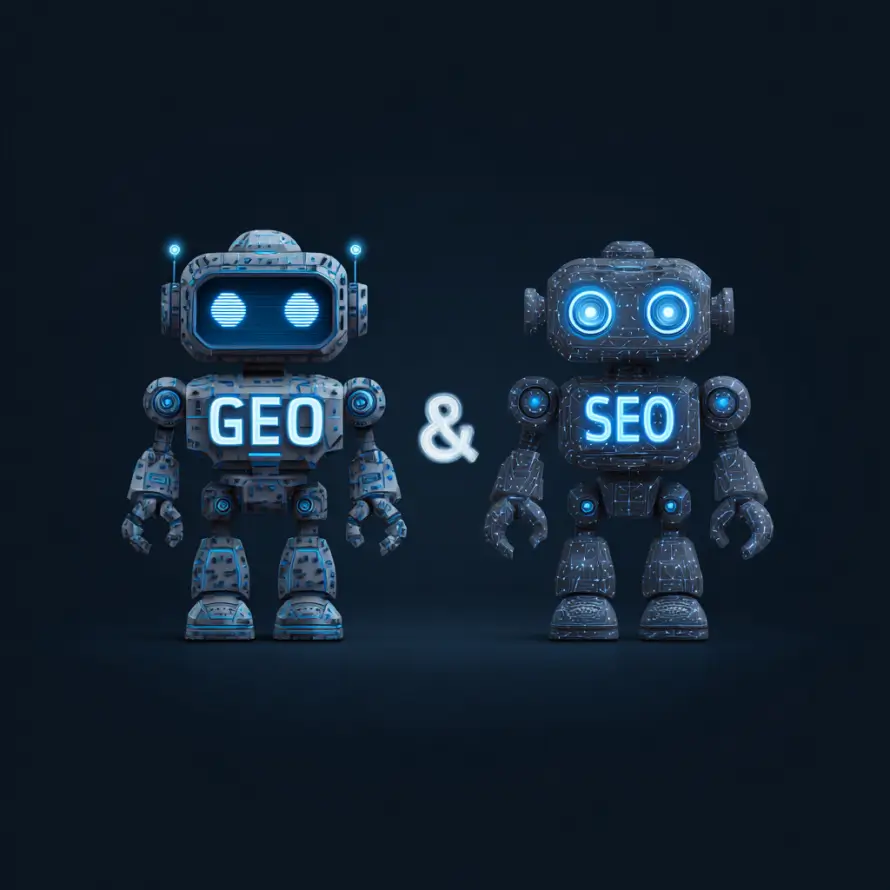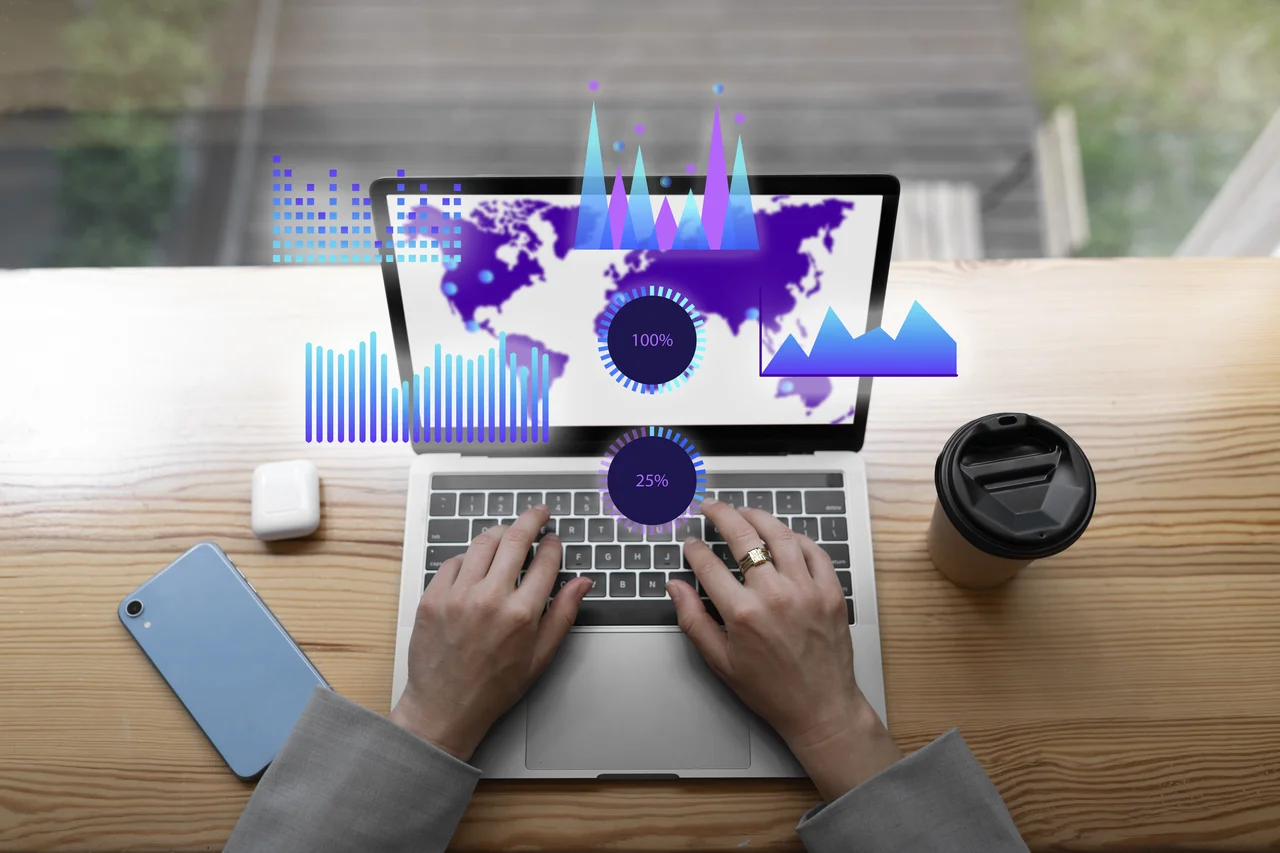Listen to article
The digital marketing landscape is in constant flux, presenting both challenges and opportunities for businesses striving to connect with their audiences. As we look ahead to 2025, it’s crucial to understand the key digital marketing industry trends that will shape strategies and investments. From the rise of augmented reality in shopping to the growing importance of first-party data, the future of marketing demands agility and innovation.
But with digital ad spending projected to increase to $44.35 billion in 2025, where should marketers focus their efforts to maximize ROI? In this article, we’ll explore the most important digital marketing trends influencing the current market landscape, provide valuable insights and statistics, and offer actionable tips to help you stay ahead of the curve.
Immersive Retail: How AR is Shaping the Future of Shopping
Augmented Reality (AR) is no longer just a buzzword—it’s rapidly becoming a game-changer in the retail industry. By bridging the gap between digital and physical shopping experiences, AR empowers consumers to make more informed purchasing decisions while creating an engaging and immersive journey. From virtual try-ons to interactive product demos, AR is transforming passive browsing into a dynamic, personalized experience that resonates with modern shoppers.
- A recent study by Deloitte indicates that approximately 71% of consumers would shop more frequently if AR was integrated into their shopping experience. Source
As shopping behaviors shift toward convenience and personalization, AR stands out as a critical driver of customer satisfaction and loyalty. Retailers who adopt AR technology gain more than just a competitive edge—they tap into a growing demand for innovative and memorable experiences that go beyond the transactional. With AR allowing shoppers to preview furniture in their homes, try on clothing virtually, or visualize skincare results in real-time, brands can create connections that feel both highly relevant and seamless.
Pro Tip:
Incorporating AR doesn’t have to be complex—start small with virtual try-ons or AR-enabled catalogs. Focus on user-friendly interfaces and involve your customers in the process by seeking feedback to fine-tune the experience. No matter the scale, prioritizing AR investments now can future-proof your business and increase shopper engagement.
Maximizing Opportunities in Ad Tech and the Voice-Driven Economy
The digital marketing landscape is at a pivotal point, where technology-driven advancements and shifting consumer behaviors are creating both challenges and opportunities for brands. While digital ad spending continues its upward trend, a noticeable deceleration indicates that marketers must fine-tune their strategies to optimize budgets and maximize ROI. At the same time, the continued surge of voice search and commerce is reshaping how consumers interact with technology, offering brands a new dimension for engagement. To remain competitive, businesses must adopt a more holistic approach that combines innovation in ad tech with the growing influence of voice-centric experiences.
- Digital ad spending is projected to grow by 10.3% in 2025 to $44.35 billion, though this marks a 1.8% slowdown in growth compared to 2024. Source
- The ad tech sector is set to unveil major innovations in 2025, introducing cutting-edge tools and strategies. Source
- Voice is projected to become a $45 billion channel by 2028. Source
- Voice shopping already accounts for $3.3 billion in consumer spending. Source
- 51% of voice shoppers rely on it for product research. Source
- 22% of consumers make purchases directly via voice commands. Source
- 17% of consumers use voice technology to reorder items. Source
- Conversational AI is on the rise, encouraging brands to craft content with natural language and conversational tones to foster greater engagement. Source
The digital ad landscape is shifting, and so must your marketing strategies. The modest slowdown in ad spend growth suggests that success will hinge on balancing innovation with efficiency. By leveraging emerging ad tech tools that focus on enhanced targeting, privacy compliance, and automation, marketers can create campaigns that truly cut through the noise. Meanwhile, the explosive growth of voice search and commerce requires businesses to rethink their content strategies, prioritizing conversational phrasing and natural language to capture this growing audience. Brands that fail to embrace these changes risk losing resonance with digitally savvy consumers. Diversification—whether through organic content strategies, community-driven initiatives, or voice-optimized campaigns—will empower marketers to remain agile and relevant in this competitive space.
Pro Tip:
Don’t think of voice search optimization as a supplementary tactic—it’s becoming a cornerstone of digital marketing. Use tools like Google Analytics or Search Console to identify existing long-tail keywords your audience is already searching for, and adjust your content to mirror how people naturally speak. This will help you rank higher in voice queries while enhancing overall discoverability.
Where Digital Marketing Budgets Are Heading
As the marketing landscape continues to evolve, understanding budget allocation offers a glimpse into the priorities that drive growth and innovation. Businesses, whether B2B or small-scale, are strategically channeling their resources to meet changing consumer expectations and leverage emerging channels. This shift reflects not only the importance of digital marketing but also its complexity in delivering measurable results. Let’s dive into where the dollars are going.
- A May 2024 Salesforce report reveals that B2B marketers are allocating the largest portions of their budgets toward advertising (19%) and content creation (17%). Source
- A striking 94% of small businesses intend to increase their investment in digital marketing during 2024, showcasing their commitment to expanding their online presence. Source
The takeaway? Businesses of all sizes are doubling down on digital strategies, recognizing their potential to drive growth, foster engagement, and achieve long-term scalability. For B2B marketers, the emphasis on advertising and content highlights a desire to build authority and capture audience attention more effectively. Meanwhile, small businesses are ramping up investments to stay competitive in crowded digital spaces.
Pro Tip:
Strategize smarter, not just bigger. Regularly analyze your campaign performance to identify which channels and content types yield the best results. Reallocate funds as needed to ensure your budget is fueling outcomes that matter most to your bottom line.
The Rise of Seamless Omnichannel and Mobile-Centric Marketing
In a hyper-connected world, consumers interact with brands across multiple channels—sometimes simultaneously. They might start their journey on a social media platform, continue it via a mobile app, and complete a purchase in-store. To meet these expectations, businesses must deliver a unified, frictionless experience across every touchpoint. At the same time, with mobile devices emerging as the go-to internet gateway, especially for younger audiences, a mobile-first strategy is no longer optional—it’s a foundational requirement for engaging today’s tech-savvy consumers.
- Digital marketing agencies are placing greater emphasis on omnichannel strategies, helping brands connect with their customers at every stage of the buyer’s journey, from awareness to long-term loyalty. Source
- An astounding 97.6% of internet users aged 16 to 24 own a smartphone, making mobile the dominant channel for younger audiences. Source
- Effective use of mobile technology to craft tailored, engaging experiences is critical for meeting the growing expectations of these digitally native consumers. Source
A New Standard for 2025: Unified and Mobile-First Experiences
As digital marketing evolves, brands that fail to adopt an omnichannel approach risk losing relevance in a competitive landscape. The key lies in integrating channels—social, email, mobile, and brick-and-mortar stores—into cohesive, user-centric journeys. Additionally, with nearly all young internet users relying on smartphones, crafting mobile-first experiences that resonate with this demographic will determine how well brands can capture and retain attention.
Pro Tip:
Regularly assess your customer experience across all platforms by putting yourself in your audience’s shoes. Look for inconsistencies or friction points, especially on mobile devices. Speed matters, so optimize your website for performance, ensuring fast loading times, intuitive navigation, and responsiveness across all screen sizes to maintain engagement and foster loyalty.
Why Core Digital Marketing Channels Remain an Indispensable Foundation
Amid the constant influx of new tools, platforms, and strategies in the digital marketing landscape, core channels like email, SEO, mobile, and content marketing continue to prove their timeless value. These foundational approaches may not have the novelty of emerging technologies, but their consistent ROI and adaptability to various industries make them indispensable for long-term success. They’re not just surviving the rapidly shifting landscape—they’re thriving, thanks to their ability to evolve alongside consumer behaviors.
- Email marketing continues to deliver one of the highest returns on investment, closely followed by SEO, mobile marketing, and content marketing. Source
Takeaway: Build Agility Without Abandoning the Fundamentals
While it’s tempting to chase after shiny new innovations, the enduring power of traditional digital marketing channels lies in their adaptability. For businesses navigating a fast-paced digital environment, these tried-and-true methods aren’t just a fallback—they’re a springboard. By doubling down on strategies like email personalization, search optimization, mobile-first solutions, and value-driven content, you can create campaigns that stand the test of time while layering in innovation to stay competitive.
Pro Tip:
Don’t let familiarity breed complacency. Even within these core channels, there’s room for experimentation. Test new automation tools for email marketing, leverage A/B testing for SEO strategies, and optimize content for zero-click searches and voice search queries. A balance of innovation and mastery will keep your marketing efforts agile and effective.
The Growing Importance of Strategic Content in Digital Marketing
In an increasingly saturated digital environment, having a cohesive digital marketing strategy is no longer optional—it’s the foundation for success. And at the heart of that strategy lies content marketing, a critical driver for fostering trust, authority, and engagement. However, not all businesses are on the same page when it comes to adopting and integrating a focused approach. The brands that stand out in 2025 will be those that prioritize not just having a strategy but executing it with high-quality, audience-centric content. This shift toward quality signals a maturing industry, where depth and relevance win out over sheer volume.
- Nearly 47% of businesses still operate without a documented digital marketing strategy. Source
- 70% of B2B organizations align their content strategy with broader marketing, sales, and communication goals. Source
- About 17% of B2B businesses use a standalone content marketing strategy. Source
- Only 9% of B2B businesses report having no content strategy at all. Source
- A striking 83% of marketers emphasize the importance of content quality over quantity, even if it reduces posting frequency. Source
- This commitment to producing high-quality content is driving success for leading brands, helping them foster stronger, more engaged audiences. Source
Takeaway: Quality Content is the Currency of Connection
The fact that nearly half of businesses are operating without a documented strategy should serve as a wake-up call for marketers. Without a roadmap, it’s nearly impossible to navigate the complexities of digital marketing effectively. Meanwhile, the other half of the industry is rapidly evolving, focusing on integrating content strategy as a cornerstone for their success. For 2025 and beyond, the key to thriving won’t just be about creating more content—it will be about creating better, more impactful content that resonates deeply with target audiences.
Marketers who pivot their focus to high-quality, value-driven content will not only improve engagement but also strengthen their brand’s authority and community loyalty. In a world where consumers are inundated with endless messaging, becoming a trusted voice through well-researched, thoughtful content is a differentiator that no algorithm change can erase.
Pro Tip:
Invest in tools like content audits, SEO research, and customer feedback loops to ensure your strategy delivers exactly what your audience craves. High-quality content starts with understanding your audience’s pain points and crafting solutions that offer real value.
The Rise of First-Party Data: A Path to Trust and Precision
As privacy regulations tighten and third-party cookies near extinction, businesses are facing a make-or-break moment. The ability to adapt to a cookieless future lies in leveraging first-party data—a strategy not only essential for maintaining ad efficiency but also for building trust in an era where customer loyalty is earned through transparency and relevance. Marketers who master first-party data are better positioned to deliver tailored experiences, outperform competitors, and foster long-term relationships with their audience.
- The decline of third-party cookies has elevated the importance of first-party data, content marketing, and email marketing. Source
- Leveraging quality first-party data ensures higher quality leads in an increasingly competitive ad space. Source
- High-quality first-party data improves the performance of Lookalike Audiences, which enhances social ad targeting. Source
- Maintaining brand credibility and customer loyalty requires a responsible approach to data usage and a strong emphasis on social responsibility. Source
Takeaway: First-Party Data is the New Competitive Edge
In the privacy-centric future of marketing, brands that prioritize first-party data will not only navigate compliance challenges but also carve a niche in delivering hyper-personalized experiences. This approach fosters a dual advantage: achieving superior targeting precision and gaining consumer trust. However, success in this space requires more than data collection—it demands ethical stewardship and innovative application. From refining audience insights to enhancing ad relevance, first-party data is your golden ticket to thriving in an increasingly privacy-aware world.
Pro Tip:
Future-proof your strategies by using tools like CRMs, CDPs, and marketing automation platforms to collect, organize, and activate first-party data effectively. Don’t forget to incentivize customers with transparent, value-driven data exchange programs, such as offering exclusive content, loyalty perks, or personalized recommendations in return for their trust.
Why Video Is the Cornerstone of Digital Engagement
In an era where attention spans are shortening, video content has emerged as the preferred medium for capturing and retaining audience interest. Its ability to communicate complex information quickly and emotionally has made it a cornerstone of modern marketing strategies. Whether it’s educating consumers, inspiring action, or building trust, the influence of video is undeniable—and the numbers paint a clear picture of its dominance.
- Cisco predicted that online videos would account for over 82% of all consumer internet traffic by 2022. Source
- 91% of businesses already utilize video as a marketing tool. Source
- Videos under 90 seconds retain 50% of viewers, highlighting the power of short-form content. Source
- User-generated content videos on platforms like YouTube receive 10 times more views than brand-produced videos. Source
- Campaigns featuring user-generated content see a 25% boost in engagement. Source
- 60% of users are open to creating branded content if incentivized. Source
- Interactive video formats improve viewer retention by offering immersive, memorable experiences. Source
- 88% of consumers want to see more video content from brands. Source
Takeaway: Video Isn’t Just an Asset, It’s an Advantage
The dominance of video in digital marketing is no longer up for debate—it’s the medium consumers prefer and the one that delivers results. However, standing out in a crowded landscape requires more than just creating videos. Businesses need to lean into strategies that amplify engagement, such as leveraging user-generated content, prioritizing storytelling, and experimenting with interactive experiences. By doing so, brands can ensure that their video content not only reaches their audience but also resonates with them on a deeper level.
Pro Tip:
To maximize your video ROI, take a data-driven approach. Monitor audience behavior to identify the formats and topics that perform best. Use tools like Vidyard, Wistia, or Vimeo to analyze performance metrics, and don’t shy away from repurposing high-performing videos across multiple platforms for extended reach.
The Shifting Dynamics of Social Media Platforms
As social media ecosystems become increasingly fragmented, marketers are facing new challenges—and opportunities—in connecting with their audiences. Emerging platforms like Bluesky are redefining the social media space, while benchmarks such as add-to-basket and conversion rates are becoming critical for tying social interactions to tangible business outcomes. To stay competitive, businesses must not only follow these trends but also integrate them strategically into their marketing efforts.
- Social network Bluesky is experiencing growth due to migration from X (formerly Twitter). Source
- Tracking add-to-basket rates, conversion rates, and other e-commerce KPIs across different platforms is essential for forecasting online sales. Source
The evolution of social media is a constant reminder that no platform remains dominant forever. While Bluesky’s rise illustrates the momentum smaller platforms can achieve in times of user dissatisfaction, the increased focus on aligning e-commerce metrics with social media performance demonstrates the growing need for marketers to connect engagement with ROI.
Pro Tip:
Don’t rely solely on platform popularity—evaluate each one based on how effectively it reaches your target audience. Regularly test new platforms like Bluesky while refining your approach on established ones to ensure your strategy adapts alongside your audience.
The Growing Need for Digital Marketing Expertise and the Untapped Potential of Community Platforms
The digital world isn’t just expanding—it’s thriving at an unprecedented pace. With billions joining the online ecosystem annually, brands need skilled digital marketers to navigate the sea of opportunities and challenges. However, the rise of community-driven platforms like Reddit offers a fresh channel for engagement, where authentic interactions and community alignment can trump traditional advertising.
- By 2027, 6 billion people are expected to be internet users, creating an unparalleled demand for proficient digital marketers to reach and engage this ever-growing audience. Source
- Community platforms are gaining momentum—last year alone, “Reddit” was part of 32 billion Google searches, underlining its role as a go-to source for consumer opinions and trusted reviews. Source
- Reddit’s impact continues to grow, with the platform reporting a 50% year-over-year increase in revenue and users in Q2 2024, proving its potential for fostering brand-consumer interactions. Source
Takeaway: Harness Online Opportunities with Strategic Expertise
With billions of people actively engaging online, the influence of skilled digital marketers is invaluable for businesses aiming to stay relevant. However, while the industry prioritizes technical expertise, the real differentiators are authenticity and cultural fluency on platforms like Reddit. Brands that embrace the unique conversational tone of communities can spark genuine interest and foster loyalty beyond traditional marketing approaches. It’s not just about reaching audiences—it’s about truly connecting with them where they are.
For small and medium-sized businesses that lack the resources to build an in-house team, exploring digital marketing strategies for small businesses can be a game-changer. These strategies help businesses tap into online opportunities cost-effectively while staying competitive in a crowded digital landscape.
Pro Tip:
Building trust in community platforms requires a tailored approach. Avoid coming across as overly promotional by investing time in understanding each platform’s culture. Engage authentically, participate in discussions, and create content that aligns with the values of individual communities to establish credibility and drive meaningful engagement.
The Role of Agility and Innovation in Shaping Marketing Success
As the digital landscape becomes more complex and competitive, marketers must embrace agility and innovation as non-negotiable attributes. Whether it’s responding to rapidly shifting algorithms, integrating new technologies, or navigating unpredictable economic climates, a flexible approach is critical. Businesses that remain adaptable, data-driven, and forward-thinking will not only keep pace but also find opportunities for growth where others may falter.
- To succeed in 2025, you need to stay agile, innovative, and data-driven. Source
The ability to pivot quickly in response to industry changes has shifted from being an advantage to a necessity for marketers. Forward-thinking strategies are no longer just about keeping up—they’re about staying ahead. Pro Tip: Foster a culture of experimentation within your marketing team. Utilize A/B testing, analyze results frequently, and leverage those insights to double down on what resonates most with your audience. For businesses looking to maintain agility across multiple channels, adopting a full-service marketing approach can provide the expertise and flexibility needed to navigate these shifts. This approach will ensure your strategy evolves in tandem with industry shifts, maintaining relevance and driving success.
Conclusion
As we look toward 2025, the digital marketing industry continues to be shaped by rapid advancements, shifting consumer behaviors, and the growing importance of data-driven strategies. From the transformative potential of augmented reality in shopping experiences to the evolution of voice search and the emergence of community-driven platforms, it’s clear that staying ahead in this dynamic landscape requires businesses to embrace innovation while grounding their efforts in solid, proven strategies.
The rise of first-party data, the emphasis on high-quality content, and the growing demand for mobile-first and omnichannel strategies all underscore the need for marketers to adapt with agility and precision. At the same time, the power of video content and the expanding role of social media offer exciting opportunities to connect with audiences in new and meaningful ways.
Success in 2025 will depend on a balance of adopting cutting-edge technologies while mastering core digital channels like SEO, email marketing, and content strategies. It’s a year that promises challenges but also immense opportunity for those ready to evolve.
Ready to boost your traffic and grow your website? Your customers are looking for you, and our SEO services can help you be found across search engines. Let’s shape your future success together!
About Digital Marketing Industry Trends Article
This article was written by the Scopic Studios team and reviewed by Araksya Hakobjanyan, SEO Lead at Scopic Studios.
Scopic Studios delivers exceptional and engaging content rooted in our expertise across marketing and creative services. Our team of talented writers and digital experts excel in transforming intricate concepts into captivating narratives tailored for diverse industries. We’re passionate about crafting content that not only resonates but also drives value across all digital platforms.
Note: This feature blog’s image are sourced from Freepik.

































































































































































































































































